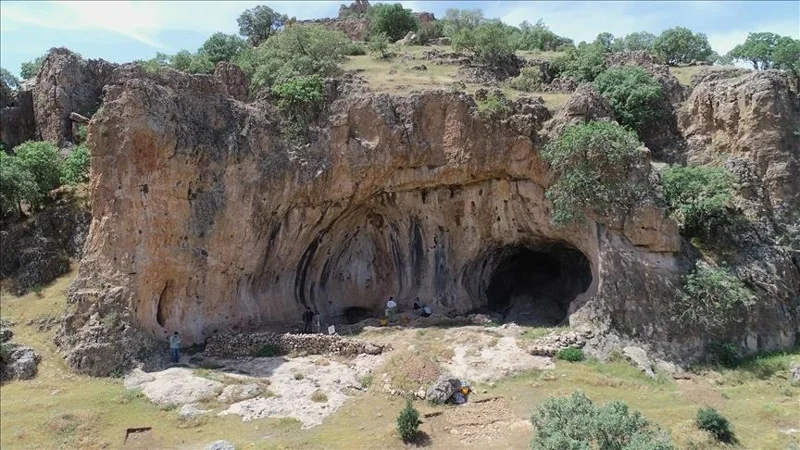Paleolithic discoveries in Türkiye reveal earliest known human activity in northern Mesopotamia
Archaeologists have uncovered rare artifacts from the Paleolithic era at Ulukoy Cave in Türkiye’s southeastern Mardin province, revealing the earliest known evidence of human activity in northern Mesopotamia, officials said, Anadolu Agency reports.

Among the discoveries are obsidian tools, animal remains, and stone weapons that provide new insights into prehistoric life and trade networks in the region, often referred to as the “Cradle of Civilization.”
Ergul Kodas, a scientific advisor to the excavation and faculty member at Mardin Artuklu University, said the obsidian tools, found in layers dating to the early Middle Paleolithic period, challenge previous assumptions about the timeline of prehistoric trade in Anatolia.
“We previously believed obsidian was used as a trade material only during the Late Paleolithic period,” Kodas told Anadolu. “The obsidian tools found in layers dating to the early Middle Paleolithic period suggest this trade in Anatolia could date back 160,000 to 200,000 years ago — much earlier than previously thought.”
The excavation at Ulukoy Cave is the first and only Paleolithic cave excavation conducted in northern Mesopotamia. Researchers believe the cave was inhabited by at least four ancient human species, including Homo erectus, archaic Homo sapiens, Neanderthals, and modern humans, over a period of approximately 300,000 to 400,000 years.
“This site is rare and important,” Kodas said. “Because it lies along early human migration routes out of Africa, the site has the potential to reshape understanding of human history.”
Animal remains found at the site are also helping researchers better understand the region’s ancient fauna and climate. The artifacts are being analyzed and preserved at the Mardin Museum conservation laboratory.
Ayhan Gok, head of culture and tourism for Mardin province, said the excavation is being carried out meticulously and could yield more significant finds.
“The site dates back roughly 400,000 to 450,000 years and is unique in Mesopotamia,” Gok said. “We hope to uncover even more valuable artifacts as work continues. Life began in this region, and the layers of history uncovered here will shed important light on the past.”
The cave, located in the Gurs Valley in the Kiziltepe district, measures 23 meters (75 feet) long and 16 meters (52 feet) deep. Rescue excavations, led by the Mardin Museum Directorate, are now in their third season following the site’s discovery during a surface survey three years ago.
It is worth reminding palaeobotanists have uncovered 24 million-year-old fossilised leaves in Assam’s Makum Coalfield, establishing an ecological connection between Northeast India and the Western Ghats. The discovery sheds light on the region’s prehistoric tropical climate and biodiversity.
